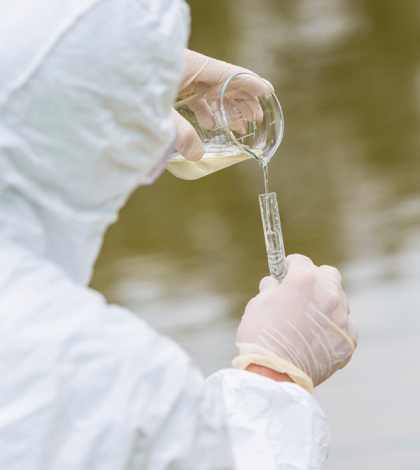The Central Valley Regional Water Quality Control Board (CVRWQCB), in coordination with Butte County, the California Department of Water Resources, and the California Department of Transportation, is continuing to test surface waters throughout the burn area that destroyed the greater Paradise area in last November’s deadly fire. The 153,00-acre blaze claimed the lives of 86 people and virtually decimated the town of Paradise and left in its wake concentrations of bacteria (E. coli), aluminum, iron, manganese, and some polycyclic aromatic hydrocarbons (PAHs) that have exceeded water quality standards for drinking water.
A Jan. 17 surface water sample collection, the second such sampling following the Camp Fire, along with the most recent round of testing was timed to assess pollutant concentrations in peak flows following a recent storm event according to Clint Snyder, Central Valley Water Board assistant executive officer. Snyder noted that, “We are pleasantly surprised by lower than expected concentrations in surface waters following this devastating fire.” But he continued saying, “To be clear, this water remains unsafe for drinking or any use due to continued detection of bacteria and other contaminants. We will continue to monitor pollutant concentrations and provide the public with information as it becomes available.”
Thankfully, the State Water Board’s Division of Drinking Water who, in part, regulates the quality of water originating from drinking water plants is also collecting samples. Recent samples indicate local water plants are operating as designed and are producing water that meets regulatory standards.
As was indicated in this publication’s Jan. 23 article (https://californiawaternewsdaily.com/drought/camp-fire-destruction-leaves-behind-contaminated-streams-and-surface-waters/) some of the contaminants would be found in the local surface waters even if the Camp Fire had not occurred. “Although the state’s testing found the elevated levels of aluminum, antimony and iron as well as polycyclic aromatic hydrocarbons (PAHs) these contaminants are also naturally occurring. Additional data is required to determine if the concentrations detected during January’s sampling are representative of post-fire surface water quality in the burn area.” Further study will be required to determine what percentages are naturally occurring and what percentages are attributable to runoff from the burn area.
Although the tested surface waters are not a source of drinking water for homes, homeowners with shallow wells along Butte Creek may be an exception where creek water may seep into the wells. Home owners with shallow wells along Butte Creek have been asked to review their well construction details and consider testing their well water. Butte Creek homeowners should visit www.ButteCountyRecovers.org to download the Private Well Safety and Testing guidance or call the Butte County Environmental Health Division at 530-552-3880 for more information. Other residents and businesses with questions regarding the quality of their drinking water supplied by a public water agency should contact the local water company or the State Water Board’s Division of Drinking Water at 530-224-4800.
Whereas additional data is needed to determine if the concentrations detected during the December and January samplings are representative of post-fire surface water quality in the burn area the CVRWQCB and its water quality partners will continue to monitor surface waters throughout the winter and spring. Updates to the public regarding these monitoring efforts will be made periodically as results become available.
 California Water News Daily Your Source For Water News in California
California Water News Daily Your Source For Water News in California


